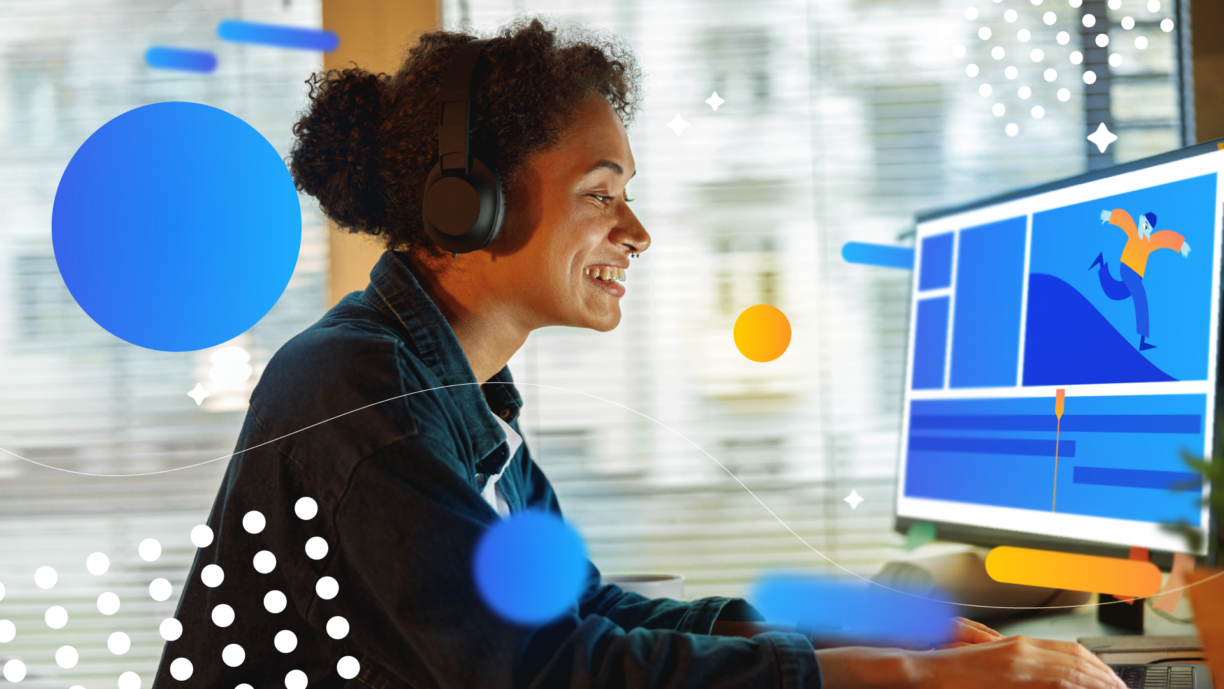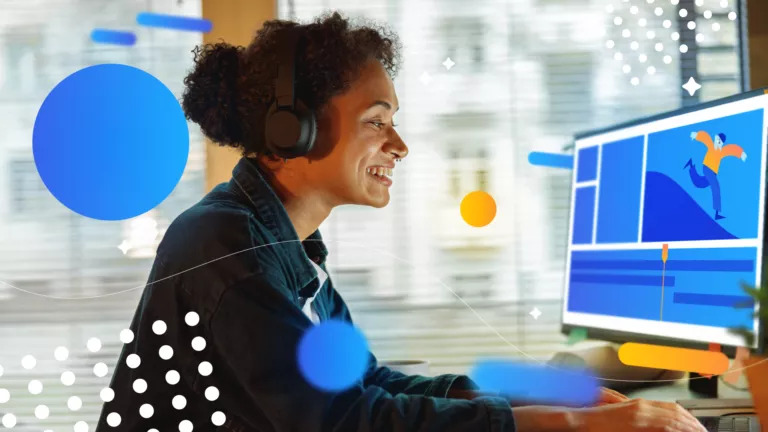What is Motion Design?
Motion design, also known as motion graphics, is a creative discipline that combines graphic design, animation, and filmmaking to create visually compelling and dynamic visual experiences. It involves the use of movement, timing, and transitions to bring static elements to life and communicate messages effectively.
The goal of motion design is to engage and captivate the audience through the artful manipulation of visual elements. It involves the deliberate use of color, composition, typography, and animation techniques to evoke emotions, convey information, and enhance storytelling.
Motion designers employ various tools and software to create their work. They utilize animation techniques such as keyframing, easing, and interpolation to create smooth and fluid movements. They also utilize visual effects, particle systems, and 3D animation to add depth and complexity to their designs.
A Glimpse into the Future
In this article, we will take a deep dive into the future of motion design, exploring emerging trends, cutting-edge technologies, and the potential impact they will have on the industry.
The Rise of Real-time Motion Graphics
Real-time motion graphics are set to revolutionize the field of motion design. With advancements in real-time rendering engines and hardware capabilities, designers can now create complex and dynamic animations in real time. This opens up new avenues for interactive experiences, live events, and virtual reality applications. Real-time motion graphics enable immediate feedback and iterations, making the creative process more efficient and dynamic.
Furthermore, the integration of game engines, such as Unity and Unreal Engine, into motion design workflows allows for seamless interactivity and immersive storytelling. Real-time motion graphics will enable designers to create interactive user interfaces, virtual reality experiences, and augmented reality overlays, blurring the line between the digital and physical worlds.
AI and Machine Learning in Motion Design
Artificial intelligence and machine learning are poised to have a profound impact on motion design. AI algorithms can analyze vast amounts of data, learn patterns, and generate dynamic visuals and animations. With AI-powered tools, motion designers can automate repetitive tasks, develop complex particle systems, and create intelligent simulations.
Additionally, AI algorithms can analyze user preferences and behavior, allowing motion designers to personalize content and create tailored experiences. Imagine a future where motion design adapts in real time to the viewer’s emotions, preferences, and environmental conditions, delivering a truly immersive and personalized experience.
Integration of Motion Design with Physical Environments
As motion design continues to evolve, its integration with physical environments is becoming increasingly prevalent. The merging of digital and physical spaces opens up new possibilities for immersive installations, experiential marketing, and interactive exhibitions. Projection mapping, LED displays, and interactive installations allow motion designers to transform physical spaces into dynamic and captivating experiences.
Architectural facades, concert stages, and retail spaces are just a few examples of where motion design can merge with the physical world, creating immersive narratives and stunning visual displays. The future of motion design lies in its ability to seamlessly integrate with physical environments, blurring the boundaries between art, technology, and architecture.
Hyper-realistic Visual Effects
The demand for hyper-realistic visual effects in film, television, and advertising is constantly increasing. With advancements in rendering technologies and simulation tools, motion designers can create stunning visuals that seamlessly blend with live-action footage. The future of motion design will bring even more realistic effects, such as fluid simulations, realistic cloth and hair animation, and lifelike character animations.

Virtual production techniques, such as using LED screens and real-time rendering, are also gaining traction in the industry. This approach allows filmmakers and motion designers to create realistic virtual environments and backgrounds in real time, reducing the need for extensive post-production work. The integration of virtual production techniques with motion design will result in more efficient and visually stunning productions.
Motion Design for Artificial Intelligence Interfaces
With the proliferation of voice assistants, chatbots, and smart devices, motion design will play a vital role in creating intuitive and engaging user experiences. Motion designers will need to craft animations and transitions that communicate the behavior and responses of artificial intelligence interfaces. Micro-interactions, subtle animations, and visual cues will help users understand and interact with AI-powered systems more effectively.
Motion design will help bridge the gap between humans and machines, making interactions with AI interfaces more natural and intuitive. The future of motion design in this context lies in its ability to create seamless and engaging user experiences that build trust and enhance the usability of AI-powered systems.
The Benefits of Motion Design on User Experience & Engagement
Captivating Attention
Motion design has the ability to grab users’ attention and draw them into the experience. Interactive animations and web design animations with well-crafted motion graphics can create a visually engaging and dynamic environment that captivates users from the moment they land on a website or interact with an application.
Visual Hierarchy and Navigation
Motion design can help establish a visual hierarchy and guide users through interfaces. By strategically animating elements, designers can direct users’ attention to important information or guide them through a specific sequence of actions. Animated cues, transitions, and micro-interactions can enhance the overall user flow and improve navigation within a digital experience.
Communicating Information
Motion design is an effective tool for communicating complex information in a visually engaging way. Through the use of animations, data visualizations, and infographics, motion designers can present information in a digestible and compelling manner. Animations can bring data to life, making it easier for users to understand and retain the presented information.
Feedback and Response
Motion design provides valuable feedback and response to user actions. Interactive animations and motion graphics can offer visual cues to confirm user interactions, notify progress, or indicate errors. These subtle animations enhance the user’s sense of control, provide reassurance, and create a more intuitive and responsive user experience.
Emotional Connection
Motion design has the ability to evoke emotions and create a more personalized user experience. Thoughtfully crafted animations and transitions can evoke feelings of delight, surprise, or satisfaction, which can contribute to a positive emotional connection between users and the digital product or interface. This emotional engagement can increase user satisfaction and encourage repeat visits or interactions.
Increased Engagement and Interactivity
Motion design encourages user engagement and interaction. By incorporating interactive animations and motion graphics, designers can create a more immersive and participatory experience. Interactive elements and animations can invite users to explore and interact with the interface, increasing engagement and creating a sense of playfulness.
What Tools & Technologies to Keep an Eye on for the Future of Motion Design?
3D Animation Software
3D animation software provides motion designers with the ability to create complex and realistic animations in three-dimensional space. Keep an eye on industry-leading software such as Autodesk Maya, Cinema 4D, and Blender. These tools offer powerful features for modeling, texturing, rigging, and rendering, enabling motion designers to create stunning visual effects and lifelike character animations.
Real-time Rendering Engines
Real-time rendering engines, like Unreal Engine and Unity, are revolutionizing the way motion designers work. These engines provide the capability to create and render high-quality animations in real time, allowing for immediate feedback and faster iterations. Real-time rendering engines are particularly valuable for interactive experiences, virtual reality, and augmented reality applications.
Interactive Design Tools
Interactive design tools are becoming increasingly important in motion design, especially for web and user interface design. Tools like Adobe XD, Framer, and ProtoPie allow motion designers to create interactive prototypes with motion graphics and animations. These tools enable designers to test and refine their designs with user interactions, resulting in more intuitive and engaging experiences.
GPU Rendering
Graphics Processing Unit (GPU) rendering is a technology that leverages the power of GPUs to accelerate rendering times. GPU rendering engines, such as NVIDIA’s CUDA and AMD’s Radeon ProRender, enable motion designers to render complex animations and visual effects faster than ever before. This technology significantly reduces production time and allows for more iterations and experimentation.
Virtual Production Techniques
Virtual production techniques, popularized by films like “The Mandalorian,” involve integrating real-time rendering and LED screens to create virtual environments. This approach allows motion designers to place actors or objects in digital environments, interactively lighting and rendering scenes in real time. Virtual production techniques offer more creative control, reduce post-production work, and enable a seamless integration of live-action footage with digital elements.
Motion Design Plugins and Scripts
Plugins and scripts can extend the functionality of motion design software and streamline workflows. Tools like Red Giant’s Universe, aescripts + aeplugins, and Video Copilot’s Element 3D provides motion designers with additional effects, presets, and tools to enhance their creations. Stay updated on the latest plugins and scripts that can help you achieve unique and visually stunning results.
Conclusion
The future of motion design is a thrilling landscape of innovation and creative possibilities. Real-time motion graphics, AI integration, physical environment integration, hyper-realistic visual effects, and motion design for AI interfaces are just a glimpse into what lies ahead.
As technology continues to advance, motion designers will have the opportunity to push the boundaries of creativity and storytelling, creating immersive, personalized, and visually stunning experiences for audiences across various mediums. Embrace the future of motion design, and embark on an exciting journey of imagination and innovation.









